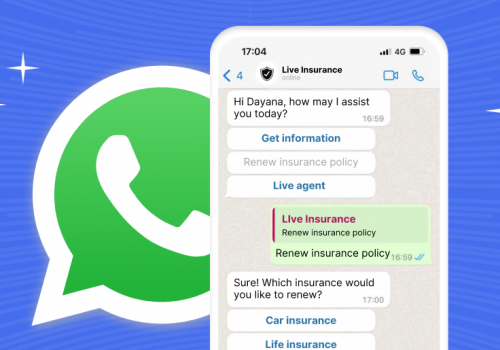Customer Service Team. If you view your sales team and customer service team as completely separate entities, then you’re not getting the most out of either team. Although these teams may fulfill different roles and functions within the business, they both primarily deal with customers and how you talk to your customers will influence whether they choose to buy your product. It’s no secret that customers want to buy from friendly and accountable businesses, so this persona should come across whether a customer is talking to the sales team or the customer service team.
Why You Should Use the Customer Service Team to Improve Sales
There should be a circular relationship between sales and customer service. The customer service team has a unique insight into how customers actually use your company’s products, and how they feel about them. You can sell to customers more successfully if you understand what they want and how they use your product.
Many products have a primary function, but customers may also use them in unintended ways. For example, we all probably know of someone has used baking soda to clean their bathroom, pliers as a hammer, and so on. In fact, many hugely successful brands only became successful when they realized customers were using their products in unintended ways and switched tactics. A clear example of this is Kleenex. When Kleenex was launched back in 1924, it was marketed as a makeup removing disposable towel. However, market research soon showed that customers were using the product to blow their noses. Kleenex switched its marketing tactic and its sales doubled. Your customer service team is in a unique position to ask customers these critical questions than can inform your design decisions going forward and determine how your sales team approach customers.
The sales and customer service team should work together, sharing knowledge and discussing tactics. They shouldn’t exist as two separate operations independent of each other, but rather have a joint approach to dealing with customers. When dealing with customers your brand or company voice is also extremely important, and it should be consistent across teams and across communication channels. If the sales and customer service team aren’t communicating regularly, you’re unlikely to have a consistent voice and as a result, your brand integrity may suffer.
Simple Customer Service Tactics to Improve Sales
Organizations spend a considerable amount of time generating sales reports and analytics. Employees sit around in meeting rooms hashing out the best strategies to increase sales, and that’s great, but they often neglect the customer service team in this equation.
You have to consider that some customers may never deal with the sales team, so you can’t put all your eggs in the sales basket. A customer may browse your website, add a few items to the cart, and checkout. After your product arrives on their doorstep, they may find it wasn’t what they expected, or they can’t get it to work as intended. In this situation, they’re going to call your customer service team, not your sales team. A bad experience with the customer service team may turn them away from your company for life. However, a good experience may convert them into a repeat customer. Below are a few basic customer service tactics to encourage your customers to buy from you again.
A Strong Welcome
Customers don’t ring customer service teams for fun. They are usually calling because they have an issue or question, and in all likelihood, they’d rather be doing something else. This means they may be experiencing some level of irritation or anxiety, and it’s the customer service agent’s job to quell those negative emotions immediately. This can be done easily with a good first impression. The welcome sets the tone of the interactions that follow, so it’s important to get it right. So, how should you greet customers?
- Say “Hi” or “Hello” and thank them for getting in touch
- Keep it casual: customers prefer a friendly and informal tone to a formal tone that may come across as detached.
- How CAN I help you? Use CAN rather than MAY – customers prefer it.
- Always introduce yourself: Customers want to know who they are talking to. Letting the customer know who they are speaking to also adds a level of accountability to the organization and is likely to make the customer feel more comfortable.
Ask an Open-Ended Question
By this we mean don’t only ask your customer yes or no questions. In theory, closed questions sound like the best bet. Closed questions allow you to get straight to the problem and avoid any meandering away from the topic, which keeps call times down. However, by asking a closed question, you’re not allowing the customer to share their frustrations, which reduces their anxiety, and you’re also missing an opportunity to learn more about how customers use your product or service. Open-ended answers can give you a wealth of information that may allow you to upsell to customers because if you know exactly why they are calling, you can offer fit for purpose solutions.
It’s All About Engagement
Your customer service interactions should focus on building rapport with customers. This means thinking of ways to keep the customer engaged so that they feel listened to and like their concerns are being taken seriously. Always ask them if there’s anything else you can help them with or anything else, they’d like to discuss so they don’t feel like they are being rushed off or that they can only discuss one issue. Also, make sure your goodbye is as strong as your greeting – last impressions are just as important as first impressions.

How Should Your Sales and Customer Service Team Collaborate?
Ok, so now you know that the sales and customer service team should be working together, but how do you go about this? The approach won’t look exactly the same for all companies, but the general approach should be the same everywhere. Let’s take a look at some ways your sales and customer service team can collaborate to boost sales.
Generating Leads
The customer service team is focused on solving problems and finding solutions to the customer’s issues. In the process, they also find out a lot of information about customers that can be extremely useful to the sales team. Your customer service team should work with the sales team to work out the best questions to ask.
Of course, you don’t want your customer service agents to hound customers with lots of questions, but a shortlist of questions can go a long way. Agents can find ways to ask questions organically. Customers are often more willing to share information with customer service agents because they trust there isn’t a hidden agenda – something which often hinders the sales team. If done well, the agent can compile a list of useful information about customers to pass onto the sales team.
Upselling
There will often be opportunities for your customer service team to upsell to customers straight away, rather than transferring them to the sales team. You don’t want to turn your customer service team into a sales team, but at the same time, some small upselling can work well in certain situations. For example, if you sell paint and a customer calls the customer service team to ask when the paint will arrive, the agent may want to check they also have paintbrushes ready. This is an example of upselling that doesn’t necessarily need the involvement of the sales team because it’s a quick fix.
Another important element of upselling is that it must be appropriate. If a customer is complaining that they can’t figure out how to use your smartwatch because it’s too complicated, then it would be a bad idea to try and sell them a newer version of the watch with even more features for them to get lost in. The customer service team often builds a rapport with the customer as they guide them to a solution for their problems, and they can use this relationship to upsell appropriate items without breaking the flow of conversation by transferring the customer to a different team.
In terms of collaboration, the sales team needs to inform the customer service team what products they can upsell and which they need to leave to the sales team. The sales team also needs to keep the customer service team up to date on all the latest products and services, so the customer always feels they are talking to an expert and getting a cohesive experience.

Reviews and Recommendations
If the customer service team builds up a good rapport with the customer, they should politely encourage the customer to post a review for the company or recommend the company on social media. Again, this must be done organically rather than pushed onto the customer.
Good reviews can drastically improve sales and boost your reputation. The 2018 Review Trackers online survey found that 4 out of 5 American consumers read reviews before making a purchase. They also found that 94% of customers said that an online review convinced them to avoid a business. This goes to show how critical reviews are for your business and how a convincing negative review can negatively affect sales. The secret to avoiding negative reviews is happy customers, and the customer service team turn unhappy customers into happy ones.
Ideally, you want to have lots of positive reviews for your business, and one way to do this is to ask for them. A lot of customers only think to write a review when they have a very negative experience, which can skew the impression of your company. You probably have plenty of satisfied customers who have never considered leaving a review but would be happy to if asked, so ask.
The more positive reviews you get, the more calls your sales team gets.
Repeat and VIP Customers
The more times a customer buys your product, the more likely they are to buy again. Customers are also willing to spend more money with your company the more times they buy from you. Getting the customer to buy from you the first time is the hard part, once they’ve bought from you, you know they already trusted your company enough to complete the purchase. Use this to your advantage.
The customer service team and sales team should be sharing data about customers from one central location. The teams should ideally be working from the same platform, both having a complete view of the customer. The customer service team can add important information about the customer to the system, and the sales team can use this information to decide which customers to target. Acquiring new customers is important, but knowing your existing customers well puts you in a unique position to sell to them, and they take less convincing.




















